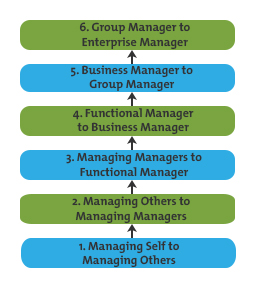The Leadership Pipeline Model
Developing Your Organization's Future Leaders

© iStockphoto
ssuaphoto
Are you making the most of the talent already in your company?
Imagine that several mid-level managers in your organization are planning to retire in the next few months, and, as a result, you're facing a serious staffing problem.
Do you start searching outside your organization, or should you focus on finding people from within the company, so that you can quickly train them for these positions?
Many organizations spend a lot of time searching for good people for their leadership teams. It's often most efficient to promote from within, as internal people are "known quantities," and are already familiar with how the company works.
However, many organizations don't have a process in place for "growing their own leaders," so they need to search for outside talent to bring in.
In this article, we'll look at the Leadership Pipeline Model, a tool that helps you plan for internal leadership development. We'll then look at how you can apply this model to your organization.
About the Model
Ram Charan, Stephen Drotter, and James Noel developed the Leadership Pipeline Model, based on 30 years of consulting work with Fortune 500 companies. They published the model in their 2000 book, "The Leadership Pipeline," which they revised in 2011.
The model helps organizations grow leaders internally at every level, from entry level team leaders to senior managers. It provides a framework that you can use to identify future leaders, assess their competence, plan their development, and measure results. Put simply, you can use the model to think about how you'll train your people to take the next step up the leadership ladder.
According to the model's developers, leaders progress through six key transitions, or "passages," in order to succeed. These six leadership transitions are shown in Figure 1, below.
Figure 1 – The Leadership Pipeline Model

Each leadership stage needs different skill-sets and values, and, at each transition, leaders have to develop these in order to lead successfully.
According to the model, senior leaders in the organization should mentor more junior managers through each leadership transition, to ensure that they're using the appropriate skills for their current level. Staying "stuck" without the right skills, even if the manager progresses upward, can cause leaders to stagnate, become ineffective, and, ultimately, fail.
Uses of the Model
There are several benefits of using the Leadership Pipeline Model.
First, promoting leaders from within...
Access the Full Article
This article is only available in full within the Mind Tools Club.
Learn More and Join TodayAlready a Club member? Log in to finish this article.


